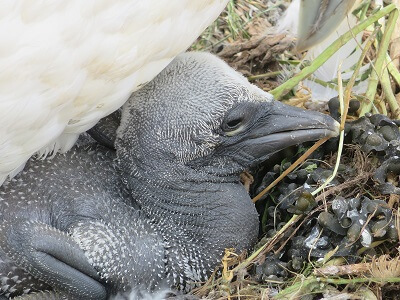This is a lesson summary. The full lesson can be viewed by purchasing an online course subscription.
Learning Objective
In this lesson we will learn about reproduction of organisms and the types of cells involved.
Learning Outcomes
By the end of this lesson you will be able to:
- Differentiate between asexual reproduction and sexual reproduction, with examples of each.
- Name the male and female reproductive cells and tissues in animals and plants.
- Explain what is meant by ‘biological life cycle’.
- Discuss fertilisation and development in different animal groups.
- Discuss fertilisation and development in flowering plants.

(Image: Johanna Brehmer, Wikimedia Commons)
Lesson Summary
- Reproduction is a biological process whereby offspring are produced from parents.
- Asexual reproduction involves one parent.
- Sexual reproduction involves two parents.
- Sexual reproduction involves sex cells (gametes).
- In animals, sperm cells are the male sex cells and egg cells (ova) are the female sex cells.
- In plants, pollen grains are the male sex cells and ovules are the female sex cells.
- Sex cells are produced by meiosis in gonads.
- In animals, testes are the male gonads and ovaries are the female gonads.
- In plants, anthers are the male gonads and ovaries are the female gonads.
- Sexual reproduction involves fertilisation which forms a zygote.
- A zygotes develops into an embryo and then a new individual organism.
- A biological life cycle is a series of forms that a multicellular organism goes through during its lifetime.
- Reproduction in different animal groups can vary in factors such as:
- Internal vs external fertilisation
- Internal vs external development
- Length of gestation or incubation
- Number of offspring produced
- Time and effort involved in raising offspring
- Flowering plants contain their reproductive structures in flowers.
- Male parts of a flower include anthers and filaments, collectively called stamens.
- Female parts of a flower include the ovary, stigma and style, collectively called a stamen.
- Sepals enclose the flower bud and petals attract pollinators.
- Pollination is the transfer of pollen from an anther to a stigma. Following pollination, a pollen tube extends down into the ovary, where fertilisation of an ovule occurs.
- A fertilised ovule develops into a seed and the surrounding ovary develops into a fruit.
- Seeds are protected by a seed coat which encloses the embryo and endosperm.
- Germination of seeds is triggered by water.
- Mosses and ferns produce spores for reproduction.
- Conifers and cycads produce cones for reproduction.

Yeast cells showing bud scars left over from budding – a type of asexual reproduction.
(Image: Mogana Das Murtey and Patchamuthu Ramasamy, Wikimedia Commons)
(Header image: slowmotiongli, Adobe Stock)
